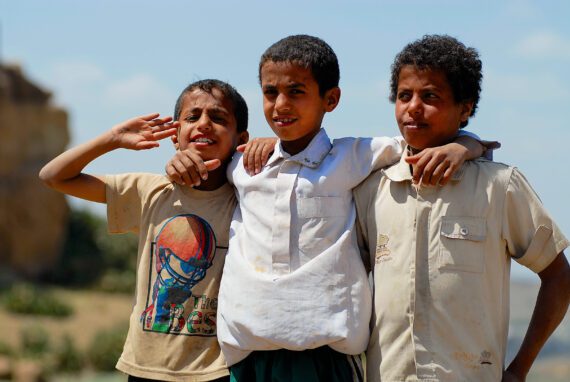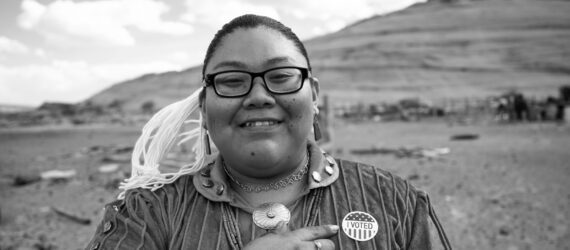By Syeda Lamia Hossain
“We need food,” is the first thing Gazans say upon meeting James Elder, spokesperson for UNICEF, the U.N. children’s agency.
“[Gazans] are saying that because their assumption is the world doesn’t know, because how would this be allowed to happen if the world knew?” Elder said in an interview.
In the seven months ending April 5, 2024, more than 33,000 people had been killed, including 14,500 children. The deaths are the result of an ongoing Israeli military attack that began in response to an attack on Israel by Hamas. On October 7, 2023, members of Hamas crossed the border from the Gaza Strip into Israel, killed hundreds of Israeli civilians, and abducted more than 230 people.
“The number of children reported killed in just over 4 months in Gaza is higher than the number of children killed in 4 years of wars [elsewhere in] the world combined. This war is a war on children. It is a war on their childhood and their future.” Philippe Lazzarini, Commissioner-General, U.N. Relief and Works Agency for Palestine Refugees
Several months later, the entire population of the Gaza Strip, 2.23 million people, are living on the verge of famine. Conditions for many are expected to deteriorate even further. By mid-July 2024, half of the population (1.11 million people) will face catastrophic conditions, the most severe level of food insecurity, “in the most likely scenario and under the assumption of an escalation of the conflict, including a ground offensive in Rafah,” according to an analysis by food security experts.
More than 50,000 children are believed to be suffering from acute malnutrition, a condition that is frequently fatal if not promptly treated, and 73,000 injuries have been reported. Yet, only 10 of 36 main hospitals are “functioning to some extent,” according to the World Health Organization (WHO).
“Hunger and disease are a deadly combination,” said Dr. Mike Ryan, Executive Director of WHO’s Health Emergencies Programme. “Hungry, weakened, and deeply traumatized children are more likely to get sick, and children who are sick, especially with diarrhea, cannot absorb nutrients well. It’s dangerous, and tragic, and happening before our eyes.”
“I feel like my children will die in front of my eyes. What can I say? I don’t know what I am to do. I can feel them dying before my eyes. This is my daughter. It’s been five days she is without food or drink. I don’t know what to do for her.” Khuloud al-Masri, Gazan mother of two.
Extremely limited humanitarian access to border crossings and within the Gaza Strip continues to impede the provision of urgently needed assistance. Humanitarian workers, both Gazans and citizens of many other countries, continue to do their best to deliver food to desperate people. But their jobs are incredibly dangerous: as of April 11, 2024, according to the United Nations, a total of 203 aid workers have been killed in Gaza, including seven workers from the U.S.-headquartered World Central Kitchen. All warring parties should change course to respect the neutrality of humanitarian workers and work to coordinate their safe passage.
The vast majority of Gazans, about 85 percent, have been forced to flee their homes. These 1.9 million displaced people are largely without shelter, because more than 70 percent of all buildings in the north, and half of all buildings in the whole country, have been either damaged or destroyed.
The scale of destruction is almost unimaginable. This is why the International Crisis Group reported last month that famine cannot be prevented solely by providing food, because so much of the infrastructure needed for basic services like clean water and sanitation has been destroyed. Johns Hopkins University’s projections suggest that even in the most optimistic ceasefire scenario, thousands of “excess” deaths are inevitable.
Top priorities—that can nonetheless only begin after a lasting ceasefire is in effect—include restoring the infrastructure needed for clean water and sanitation; building temporary shelters so that people are protected during the longer process of rebuilding homes and schools; rebuilding and reopening hospitals and clinics; and reestablishing the capacity to provide basic health care and treat malnutrition.
This daunting list of even the most urgent tasks points to both the importance of funding UNRWA, an agency with the experience and local knowledge to provide effective assistance, and the need for other humanitarian assistance programs to continue to do all they possibly can. Every hour and every day are critical to a human being.
Humanitarian action is guided by four principles: humanity, impartiality, neutrality, and independence. Humanitarians are committed to alleviating human suffering, protecting life and health, ensuring respect for human beings wherever they live, and prioritizing the most urgent cases without discrimination.
International humanitarian law strictly prohibits using starvation as a weapon of war. People who are living in a territory under occupation have additional rights. Specifically, humanitarian law holds the occupying authorities responsible for ensuring sufficient civilian access to food and essential medical care. If there are shortages, the occupying authorities are required to import supplies or authorize relief efforts.
Bread for the World is calling for diplomatic efforts towards a ceasefire, the release of all hostages, the allocation of sufficient humanitarian assistance, the access needed to deliver assistance, and safety and security for aid workers.
Syeda Lamia Hossain is a global hunger fellow, Policy and Research Institute, with Bread for the World.



